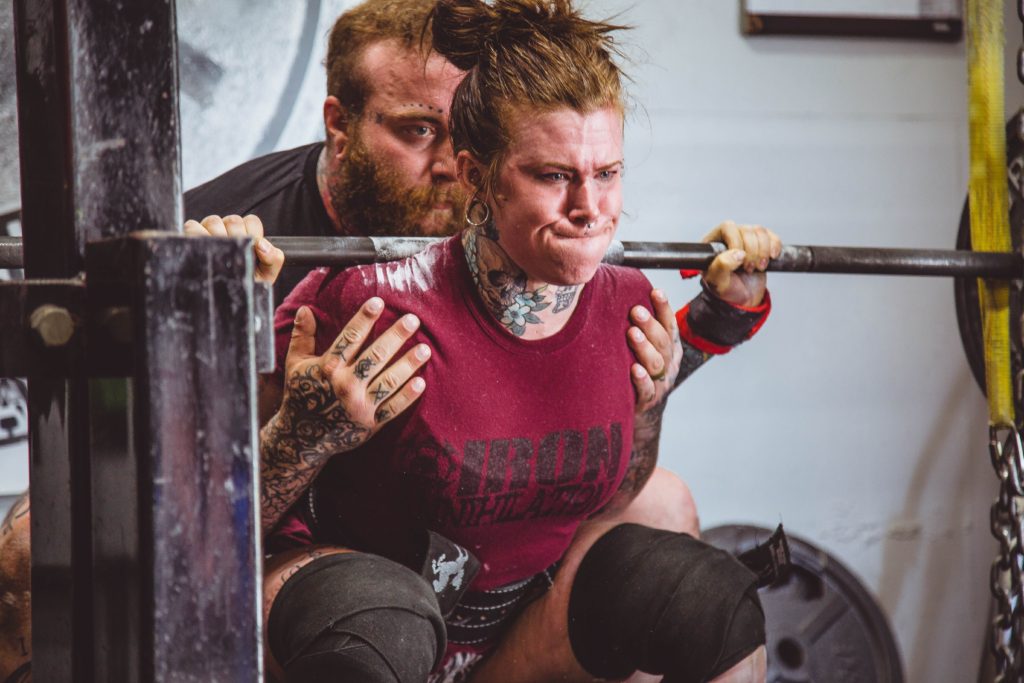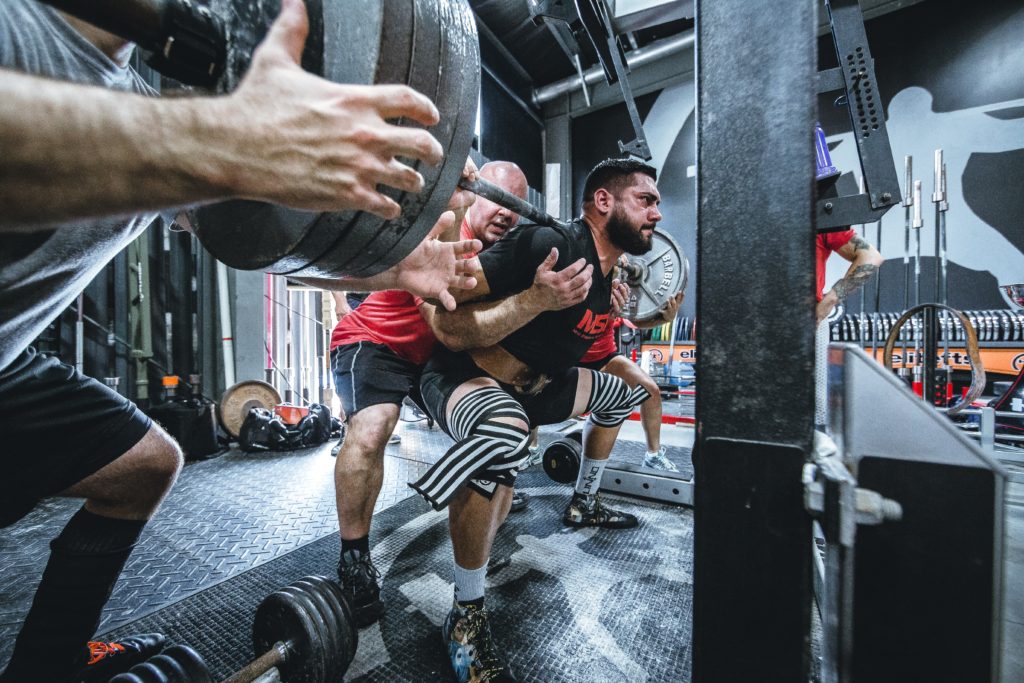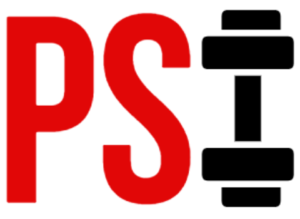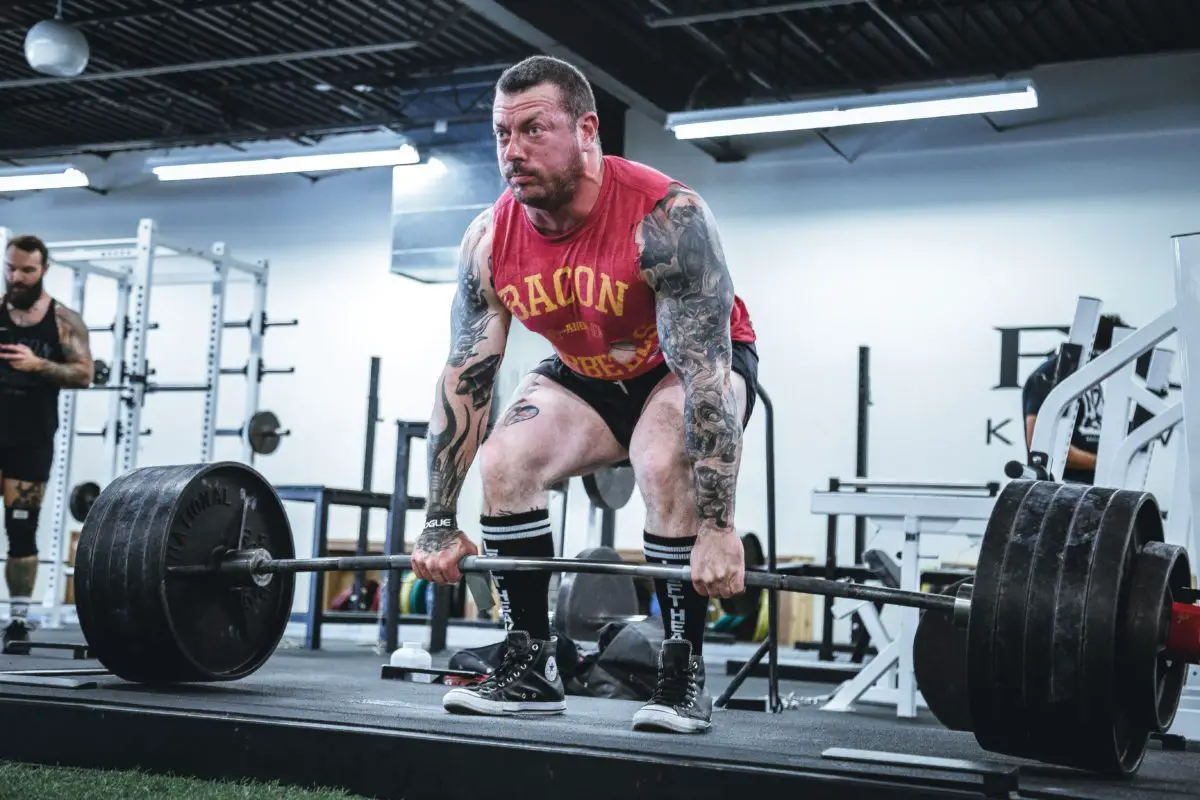It seems like every day, a new training protocol or program sees the light of day. There are so many styles of training out there that most of us end up spending more time and effort trying to figure out how to train than we do actually.. you know.. training.
Everywhere you look, there’s someone who’s trying to shove their ‘superior’ way of training down your throat. And the bad news?
Most of the protocols/programs out there have major issues. They are often very complicated, very demanding, and short-term. Not to mention the countless programs that are pure garbage. But I digress.
Today, we’ll take a look at an old, simple and effective training style that has proven itself over and over again – reverse pyramid training.
What is Reverse Pyramid Training and What’s the Logic Behind It?
For the sake of simplicity (and my wish to avoid boring you to death), I’ll try to keep it simple. Reverse pyramid training is a style of training where you start off your workouts with heavier and more demanding sets while you are still fresh. As the workout progresses, you gradually decrease the weight you use in favor of doing more repetitions.
So, here’s an example if you were to do your first exercise of the day in an RPT fashion:
2-4 warm-up sets, working up to your training weight
Set 1: weight you can lift for 4-8 repetitions
Set 2: take 10% off top set, do extra reps
Set 3: take 10% off set #2, do extra reps
Example:
2-4 warm-up sets, working up to 375 pounds on the deadlift
Set 1: 375 pounds for 5 repetitions
Set 2: 335 pounds for 6-7 repetitions
Set 3: 305 pounds for 8-9 repetitions
Treat your warm-up as you normally do. Do a few progressively heavier sets for a few simple repetitions and don’t put too much effort in them. The goal is to work your way up to the working weight, not tire yourself by the time you start your top set.
Now, anecdotally, this style of training makes a lot of sense. You are fresh and recovered at the beginning of your workouts, which means that you can put a lot of effort into the first few sets of your workouts and, by extension, force a greater response from your body (building strength).

How to Train RPT Style
Part of the reason why I love reverse pyramid training is that it’s very easy to understand and simple to get started.
- Do a few warm-up sets, slowly working your way up to 75-85% of your top set weight.
- Load the weight for your top set. For the deadlift or trap bar deadlift, it’s usually a weight you can lift for 3-6 repetitions. For any other compound movement (bench, squat, row, press, pull-up, etc.) a bit higher (6-8 repetitions) is advised.
- Decrease the weight by 10%, rest up, and do the second set, aiming to do 1-2 more repetitions.
- Decrease the weight by 10% more, rest up, and do the final set, aiming for 1-2 extra repetitions.
- Continue to the next exercise.
You should put a lot of effort into each set and do as many repetitions as you can without reaching failure. If you start cutting the range of motion short or your technique breaks down, stop the set. This is your maximum.
That’s the essence of RPT training in action. Once you understand that, you can apply reverse pyramid training in many different ways to your training.
You can do it for the sets of a given exercise as we discussed above, but you can also do it on an exercise-to-exercise basis:
Exercise 1 (e.g., deadlift): 4 sets of 4-8 repetitions
Exercise 2 (e.g., barbell row): 4 sets of 6-10 repetitions
Exercise 3 (e.g., lat pulldown): 3 sets of 8-12 repetitions
Exercise 4 (e.g., seated cable row): 3 sets of 10-15 repetitions
As you see, we are still gradually lowering the weight and increasing the repetitions as we progress into our workout and you get more fatigued. The only difference is that we are doing it on a larger scale.
You can also implement this style for each exercise and work your way ‘down,’ but understand that this style of training is very demanding and your risk of overtraining or injuring yourself would be much higher.
Here’s an example:
Exercise 1 (bench press): set 1 – 6 to 8 repetitions ⇒ set 2 (drop weight by 10%) – 8 to 10 repetitions ⇒ set 3 (drop weight by another 10%) 10-12 repetitions
Exercise 2 (incline press): set 1 – 6 to 8 repetitions ⇒ set 2 (drop weight by 10%) – 8 to 10 repetitions ⇒ set 3 (drop weight by another 10%) 10-12 repetitions
Exercise 3 (machine chest press): set 1 – 6 to 8 repetitions ⇒ set 2 (drop weight by 10%) – 8 to 10 repetitions ⇒ set 3 (drop weight by another 10%) 10-12 repetitions
Etc., etc.
Again, I don’t recommend this, because it’s highly demanding. For your latter sets, I recommend either going for straight sets (e.g., 3 sets x 10-15 reps) or using RPT in the context of the entire workout (i.e., gradually lowering the weight overall in favor of more repetitions done).
How you choose to implement RPT is up to you, but understand that you should use it on a set-to-set basis only for compound movements, preferably in the beginning of your workout. After that, the accessory work should be done with lighter weights for more repetitions (8+).
To avoid injury, its important to have good form on your deadlift. Please watch this short video on deadlift form.
How to Gain Strength With Reverse Pyramid Training
How good a training protocol or program is can be largely determined by its progression style. Many programs out there don’t employ any style of progression on a weekly or monthly basis, yet people wonder why they’re not getting any decent results from their 20-set workouts.
Here’s the deal:
If you want to see improvement in your body and performance continuously, you need to be doing MORE as time passes. This is what training means. If you’re doing the same stuff over and over again, you are simply exercising and maintaining your current results. You’re also not getting stronger or more muscular.
This is why progressive overload is a key requirement and, as a natural lifter, getting stronger is the most reliable and efficient way to get more muscular.
Now, reverse pyramid training uses a double progression system. This means that your goal should be to increase the weight you’re lifting, the repetitions you’re doing, or, if you’re having a particularly good day, both (on a weekly basis).
Here’s how:
- For the first week or two, you’ll need to guess your starting weights so that your near-failure sets fall into the prescribed rep ranges.
For example, if you start with 120 kilos (265 lbs.) on the squat and get 8 easy reps on your top set, you should start with 125 kilos (275 lbs.) the following week. On the other hand, if you don’t manage to get at least 6 reps with 120 kilos, start the following week with 115 kilos (255 lbs.) and go from there.
- Once you’ve got your starting numbers, set goals for each exercise. For example, on the squat, place goals for 8 repetitions (top set), 10 repetitions (second set), and 12 repetitions (third set). Once you reach your goal repetitions with a given weight, you’re eligible for an increase in the following week.
For example:
Week 1
Goals: 8, 10, 12
Set 1: 100 kg x 8
Set 2: 90 kg x 10
Set 3: 80 kg x 12
You’ve cleared all three goals and can increase the load for all three sets.
Week 2
Goals: 8, 10, 12
Set 1: 102.5 kg x 6
Set 2: 92.5 kg x 9
Set 3: 82.5 kg x 12
This week, you’ve only cleared your 12-rep goal so next week up that to 85 kilos while keeping sets 1 and 2 the same. You’ll increase the weight there once you clear your goals.
This, I feel, is the most engaging and rewarding progression style because even if your top set sucks, you still have a chance to ‘earn’ your right to lift heavier weights for sets 2 and 3 in the following week (if you reach your goals, of course).
You can also increase the weight across all sets once you clear all goals, but be prepared to lift the same weights for a few weeks in a row. With the independent style I outlined above, you get to add weight where you can while working your way up to reach your three individual goals.
You can also do it in linear progression style where each week you add +2.5 kilos (5 lbs.) to the bar. The problem is, nobody past the beginner stage will make such sweet, smooth gains on a weekly basis and you’ll eventually reach a point where your top set is a 2-3 repetition grinder (or an upright row max for your spotter). The perfect way to get yourself injured.

Reverse Pyramid Training for Hypertrophy
So far, we’ve established that RPT works quite well for strength. But how does it fare with hypertrophy training?
It’s been well-established that two factors play an essential role in muscle growth – effort and training volume (study). Even if you go all out and give it your all, you can’t reasonably expect to gain much muscle if you only do a few total sets per workout.
On the other hand, even if you do a lot of sets, plenty of exercises, and dozens upon dozens of repetitions, you still need to put the effort in to spark muscle growth. Some researchers speculate that we need to lift weights that are at least 50-60% of our one repetition maximum to spark new growth (study).
Plus, we covered the importance of training to failure for muscle growth.
Quick sidenote: Researchers also speculate that lighter loads (≤50 % of one-rep max), when performed with blood flow restriction can spark superior muscle growth. Of course, that’s a different topic for another day.
So we need some balance between effort and volume to optimize muscle growth. But how does this fit with the overall structure and principles of reverse-pyramid training?
An Important Principle In Weight Training
RPT attracts many people because of its simplicity and minimalistic style. But despite the simplicity and relatively low-volume approach, it delivers excellent results for many people. Why is that?
In training (particularly as a natural athlete), there’s an essential concept of doing minimal viable work. In other words, doing as little as you can while still seeing good progress in the gym.
For one, this helps control fatigue. Second, it gives us room to expand our training volume later, when our current training no longer stimulates growth.
How The Typical RPT-style Fits Great With This Principle
Precisely because of that training principle, RPT is excellent for both strength and muscle gains for many people in the early to late-intermediate stage of lifting. It covers all of the necessary criteria:
- There is a very high effort on some sets (i.e., training to failure) which stimulates strength improvements and helps us build muscle with less training volume (study, study);
- It’s a great minimalistic approach to training that doesn’t require many training days but still allows late beginners and intermediates to see significant progress.
- RPT heavily focuses on progressive overload – a crucial ingredient for long-term progress that is often missing in training styles these days (study). With its double-progression scheme, you are always pushing for some improvement, be it more reps or more weight on the bar.Building strength then allows you to use heavier weights on volume sets (6+ repetitions), which helps stimulate more muscle growth.
A Modified RPT Style For More Advanced Individuals
Research and anecdotal evidence both suggest that reverse pyramid training works, at least as far as non-advanced people are concerned. But if we kept the fundamentals in place, there is a way to modify RPT to work for stronger, and more muscular folks.
Keeping the fundamentals, but adding more training volume.
I’m all for effort in the gym. Too many people these days are afraid to work hard. “Oh, training to failure? No, man. That’s going to lead to overtraining.”
I fully agree with John Meadows and what he has to say in the below video:
But, we can’t disregard the importance of volume – the total amount of work we do at the gym. It would be great if we could do five or six all-out sets per week and make significant progress. But that’s not the case, especially as we go beyond beginner territory.
Greg Nuckols, one of the brightest minds in the industry today, has repeatedly said that volume is a critical factor for muscle growth, and research seems to support his claims.
So, to use RPT effectively as an advanced lifter, you need to introduce some extra volume work (preferably not to failure – that’s what the reverse pyramid sets are for). This means additional sets, more exercises, and, if need be, more training days.
For example, let’s assume that the following (and quite basic) RPT split is the base:
Monday – Deadlift and Overhead Press: 3 RPT sets each (with the guidelines from the beginning) + chin-ups (straight sets)
Wednesday – Flat and Incline Bench: 3 RPT sets each + some arm and delt work (straight sets)
Friday – Squat: 3 RPT sets + chin-ups (straight or reverse pyramid sets) and some leg accessory work
On Monday, you can add an extra two back movements (straight sets, fixed load), a leg isolation exercise, and face pulls for your rear delts. On Wednesday, you can add extra working sets for your bicep, tricep, and delt work, and a shrug variation for your traps. On Friday, you can add more sets for your leg work and even add an extra exercise.
Here’s how it would look:
Monday
Deadlift – set 1: AMRAP; set 2: 10% less, more reps; set 3: 10% less, more reps;
Overhead press – same structure as the deadlift
Chin-ups: 3 sets, close to failure
Dumbbell row: 3 sets, close to failure
Lat pulldowns (wide grip): 3 sets, close to failure
Leg extensions: 3 sets, 12-15 repetitions
Face pulls: 3 sets, 15-20 repetitions
Wednesday
Flat barbell bench – same structure as that of deadlifts on Monday; 3 sets
Incline bench press – same RPT structure
EZ-bar bicep curls: 3 sets, near failure
EZ-bar lying skullcrushers: 3 sets, near failure
Dumbbell shrugs: 3 sets, near failure
Cable tricep extensions: 3 sets, near failure
Lateral dumbbell raises: 3 sets, 12-15 repetitions
Friday
High-bar back squats – same RPT structure; 3 sets
Chin-ups: 4 sets, close to failure
Leg press: 3 sets, close to failure
Lying hamstring curl: 4 sets, close to failure
Leg extensions: 3 sets, 12-15 repetitions
Calf raises: 4 sets, close to failure
This is a good balance between volume and effort to start with for hypertrophy. Over time, you can add extra volume, but you’ll also probably have to add a training day or two. Otherwise, you risk having to work out for 1.5-2 hours each time and tiring yourself out too much.

What I Like (adore is more accurate) about Reverse Pyramid Training
It’s the perfect way to maintain and increase your strength during fat loss
I’ve tried many different methods of training during fat loss for myself and clients, and I’ve found RPT to be the most effective way to get stronger and maintain muscle mass. The reason being, this is a low-volume, high-intensity style of training, perfectly suited for periods of caloric restriction.
It’s simple to follow, and there’s very little math involved
As far as simplicity goes, you can’t go wrong with RPT. It takes effort and basics to get you the desired results. Okay, and a bit of math.
You can make sweet gains with fewer training days and less training volume
Because reverse pyramid training is quite intense, you can’t (and shouldn’t) train with very high volumes or frequencies. But, you can make amazing progress with both your strength and muscle mass on as few as three workouts per week.
Suggestion: When you’re done with this one, check out this related article: How Often Should I Lift Weights to Gain Muscle?
It satisfies your ego and cravings for heavy weight
Let’s face it: we all like pushing heavy weights because it just tickles the ego like nothing else. With RPT, your focus is to lift heavy weights close to failure, but safely and intelligently.
What I Dislike About Revers Pyramid Training
It can get stale after a while
Yes, despite the (mostly) predictable progress, RPT can get stale after a while. Also, some guys tend to gravitate towards high frequency and high volume and feel like lazy slobs on reverse pyramid training.
Linear progression isn’t always predictable which can be frustrating
Yes, progressive overload tends to come in waves. On some days, you feel great, and weights just lift themselves. Other times, you feel like a boiled turd, and you may even have to use lighter weights to stay in the prescribed repetition range.
It can be mentally exhausting for some people
I know what you’re thinking:
“Doing 3 heavy sets is mentally exhausting? What the hell?”
Yes, but realize that those 3 sets (or more, if you follow RPT on multiple exercises), are tough. And when I say tough, I mean it. After a top set on the deadlift or squat, you’ll be winded, you’ll be exhausted, and you’ll need at least 4-5 minutes to recover.
Some guys explode with this type of training and thrive on it. For others, however, moderate intensities of effort work better.
But you need to try it out before coming to conclusions. (Well, unless you’re already getting stressed out and tired just by reading this. In this case, RPT is not for you.)
It’s not suited for beginners
Beginners need to spend their time learning good technique well within their physical limits. Having someone with a few weeks under the bar do RPT is downright dangerous because they haven’t established the proper motor patterns yet and can’t tell when their form goes down the crapper.
People can get wrapped up too much into the progression and disregard common sense and technique
This can tie in with the previous drawback, but intermediate and advanced lifters can also get wrapped up into the progression and forget that their once perfect deadlift technique now resembles a scared cat.
Because of that, always keep proper form and a full range of motion. Only then can you add more weight to the bar safely.
The Bottom Line
Reverse pyramid training is a very effective and simplistic approach to getting stronger. It can be used during periods of muscle growth, but also if your goal is fat loss.
It’s very result-oriented, and you’re forced to think about your progression every week thanks to the goals that you set.
There are some drawbacks to this style of training, but as long as you keep them in mind, apply yourself and don’t do anything stupid, you can make some great progress with this style.
Follow me / Pump Some Iron on Instagram for updates @pump.some.iron

